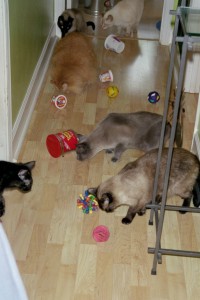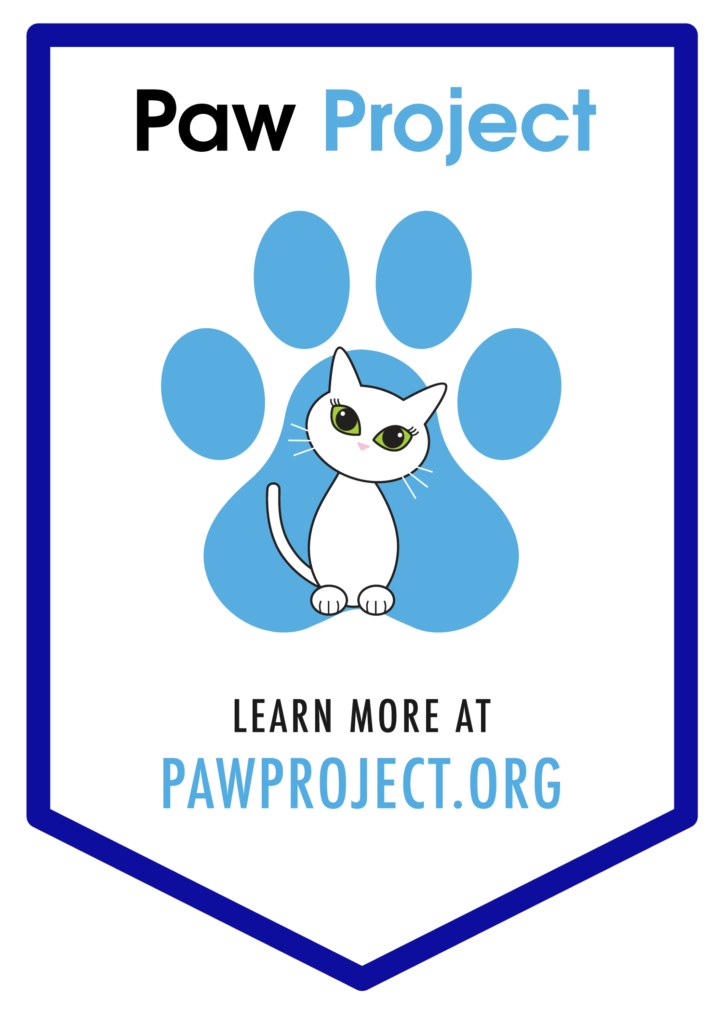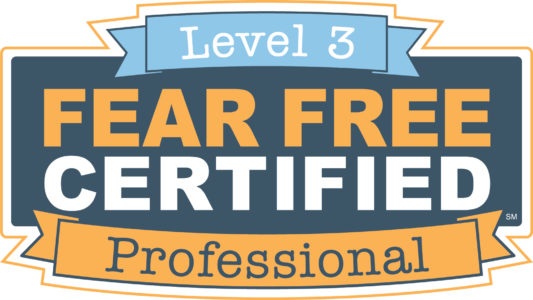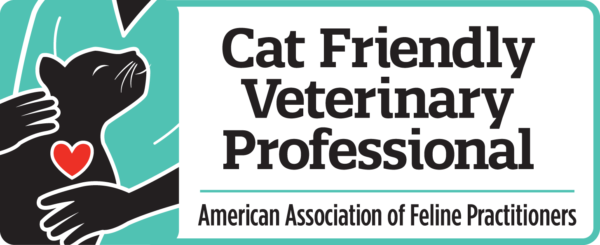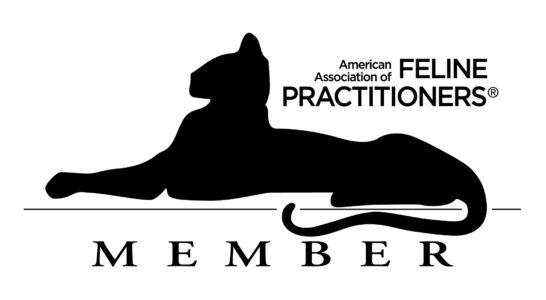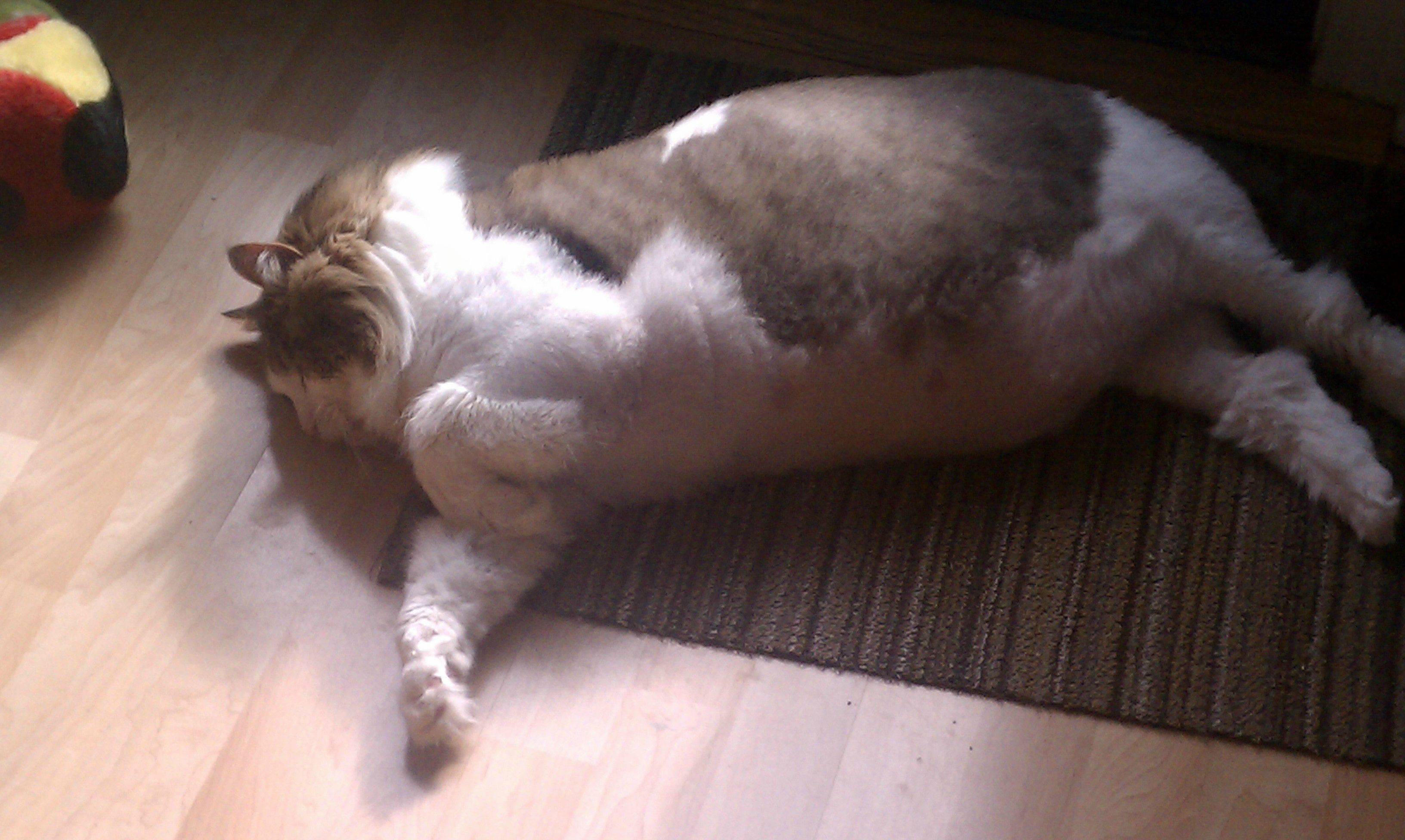
Have you made it your New Year’s resolution to help your favorite feline lose weight? Below are a few tips on how to make it a success! Of course, it is always best to check with your veterinarian before starting any diet program. Your vet may be able to recommend some special foods to you that can help accelerate the weight loss process and recommend that you bring your cat in for regular weight checks to monitor your progress.
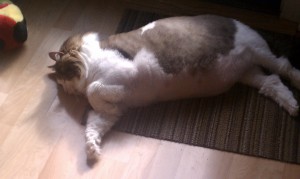 First, it is important to understand that your ferocious feline is an obligate carnivore. This means that cats need to eat meat. Their bodies have little to no requirements for carbohydrates. It is the over-abundance of dry kibble that is making our cats fat. In fact, it is a huge misconception among cat parents that canned food should be a treat or a special snack. It is just the opposite. Canned food should be your cats primary diet and dry should be the treat or available in harder to obtain ways such as via feline foraging toys.
First, it is important to understand that your ferocious feline is an obligate carnivore. This means that cats need to eat meat. Their bodies have little to no requirements for carbohydrates. It is the over-abundance of dry kibble that is making our cats fat. In fact, it is a huge misconception among cat parents that canned food should be a treat or a special snack. It is just the opposite. Canned food should be your cats primary diet and dry should be the treat or available in harder to obtain ways such as via feline foraging toys.
Cats eat about 10-20 meals throughout the day. So, in my opinion, meal feeding them twice a day is not enough. Hungry cats, like people, can become disgruntled and irritable and engage in unwanted behaviors such as aggression towards the other cats in the home. I have found that feeding 2-3 canned food meals a day and allowing them to graze on this canned food as they would have previously done with their dry can be a very successful feeding protocol. The dry food is then placed in food dispensing toys, so if they get hungry for a snack in between the canned food meals they have food available, but they must work for their carbs!
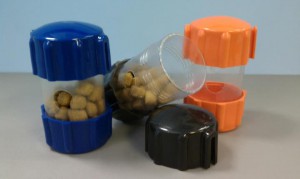 Just like with humans, if we have too much bread and pasta that packs on the pounds. The idea here is to be able to appeal to your cat’s natural need to eat many small meals throughout the course of the day. We just want to keep them moving and working for their kibble as they would if they were outside. Foraging is as close to hunting as we can provide for our indoor cats. We also want to slow down the cats that scarf all of their food and then vomit it all back up. This is common when cats are meal fed or stressed out over being meal fed. Cats take comfort in being able to control their environment. When we take that control away we create stress. Allowing them access to food when they want it is less stressful, but the giant bowls of stale dry carbs is not conducive to a nice waistline! So, again, providing plenty of canned food and dry in the foraging toys really slows down the volume of food they can get into their mouths at one time.
Just like with humans, if we have too much bread and pasta that packs on the pounds. The idea here is to be able to appeal to your cat’s natural need to eat many small meals throughout the course of the day. We just want to keep them moving and working for their kibble as they would if they were outside. Foraging is as close to hunting as we can provide for our indoor cats. We also want to slow down the cats that scarf all of their food and then vomit it all back up. This is common when cats are meal fed or stressed out over being meal fed. Cats take comfort in being able to control their environment. When we take that control away we create stress. Allowing them access to food when they want it is less stressful, but the giant bowls of stale dry carbs is not conducive to a nice waistline! So, again, providing plenty of canned food and dry in the foraging toys really slows down the volume of food they can get into their mouths at one time.
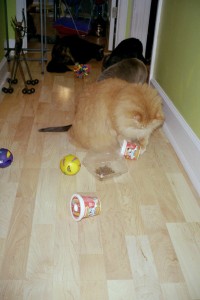 It is also important to remember that if you have multiple cats then you need multiple feeding stations. Making six cats eat lined up in a row in the kitchen can create a lot of competition for a very basic need. Instead, create feeding stations. This allows each cat to go to the room where they feel most comfortable eating, and not feel rushed to scarf and vomit their food or not get to eat at all because they got bullied away from their dish. The only one that thinks all things food must happen in the kitchen is you, the human!
It is also important to remember that if you have multiple cats then you need multiple feeding stations. Making six cats eat lined up in a row in the kitchen can create a lot of competition for a very basic need. Instead, create feeding stations. This allows each cat to go to the room where they feel most comfortable eating, and not feel rushed to scarf and vomit their food or not get to eat at all because they got bullied away from their dish. The only one that thinks all things food must happen in the kitchen is you, the human!
As with any successful diet plan exercise is also important. Foraging is great because it makes your cat move and bat something around to obtain kibble and slows them down. But interactive play with a favorite wand toy is important too. It may be challenging to peek their interest at first, but just like with humans, once we start losing weight, we get more energy and feel better. So stick with it and your kitty will be chasing that feather in no time!
Ask your veterinarian about the many prescription diets available to help with weight loss. There are many. Some cats, especially if they are senior, may require some blood testing before starting a prescription diet. Remember too, that just like with people, slow and steady wins the race. Slow weight loss is the type of weight loss that is more likely to be permanent, so do not rush things or get disheartened. Weigh your cat about once a month to monitor progress!
